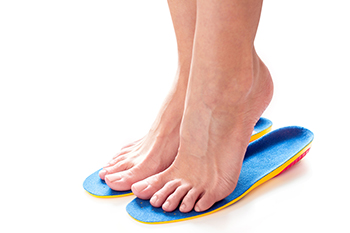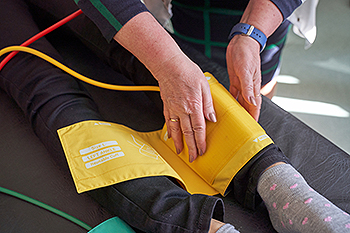Playing sports is common among youth and often continues as you become an adult. Kids and adults are both at risk of sports-related injuries. A few simple ways to prevent getting hurt while playing sports include warming up before you start, not exercising more than necessary, and stopping when you feel extreme pain. Most sports injuries are the result of doing too much too fast, thinking you can do more than you can, over training, faulty equipment, and accidents. The most common sports injuries are heel pain, stress fractures, and Achilles tendonitis. Athletes also are at risk of twisted or sprained ankles and, in some cases, broken bones. In case of a sports-related injury, it is suggested that you resist the idea of playing through the pain and, instead, stop the activity immediately. Ice, compression and elevation should follow. It is wise to consult a podiatrist as soon as possible for a full diagnosis and treatment options.
Sports related foot and ankle injuries require proper treatment before players can go back to their regular routines. For more information, contact one of our podiatrists of Foot and Ankle Clinics, PA. Our doctors can provide the care you need to keep you pain-free and on your feet.
Sports Related Foot and Ankle Injuries
Foot and ankle injuries are a common occurrence when it comes to athletes of any sport. While many athletes dismiss the initial aches and pains, the truth is that ignoring potential foot and ankle injuries can lead to serious problems. As athletes continue to place pressure and strain the area further, a mild injury can turn into something as serious as a rupture and may lead to a permanent disability. There are many factors that contribute to sports related foot and ankle injuries, which include failure to warm up properly, not providing support or wearing bad footwear. Common injuries and conditions athletes face, including:
- Plantar Fasciitis
- Plantar Fasciosis
- Achilles Tendinitis
- Achilles Tendon Rupture
- Ankle Sprains
Sports related injuries are commonly treated using the RICE method. This includes rest, applying ice to the injured area, compression and elevating the ankle. More serious sprains and injuries may require surgery, which could include arthroscopic and reconstructive surgery. Rehabilitation and therapy may also be required in order to get any recovering athlete to become fully functional again. Any unusual aches and pains an athlete sustains must be evaluated by a licensed, reputable medical professional.
If you have any questions please feel free to contact our offices located in Woodbury, West St. Paul, and Edina, MN . We offer the newest diagnostic and treatment technologies for all your foot and ankle needs.






